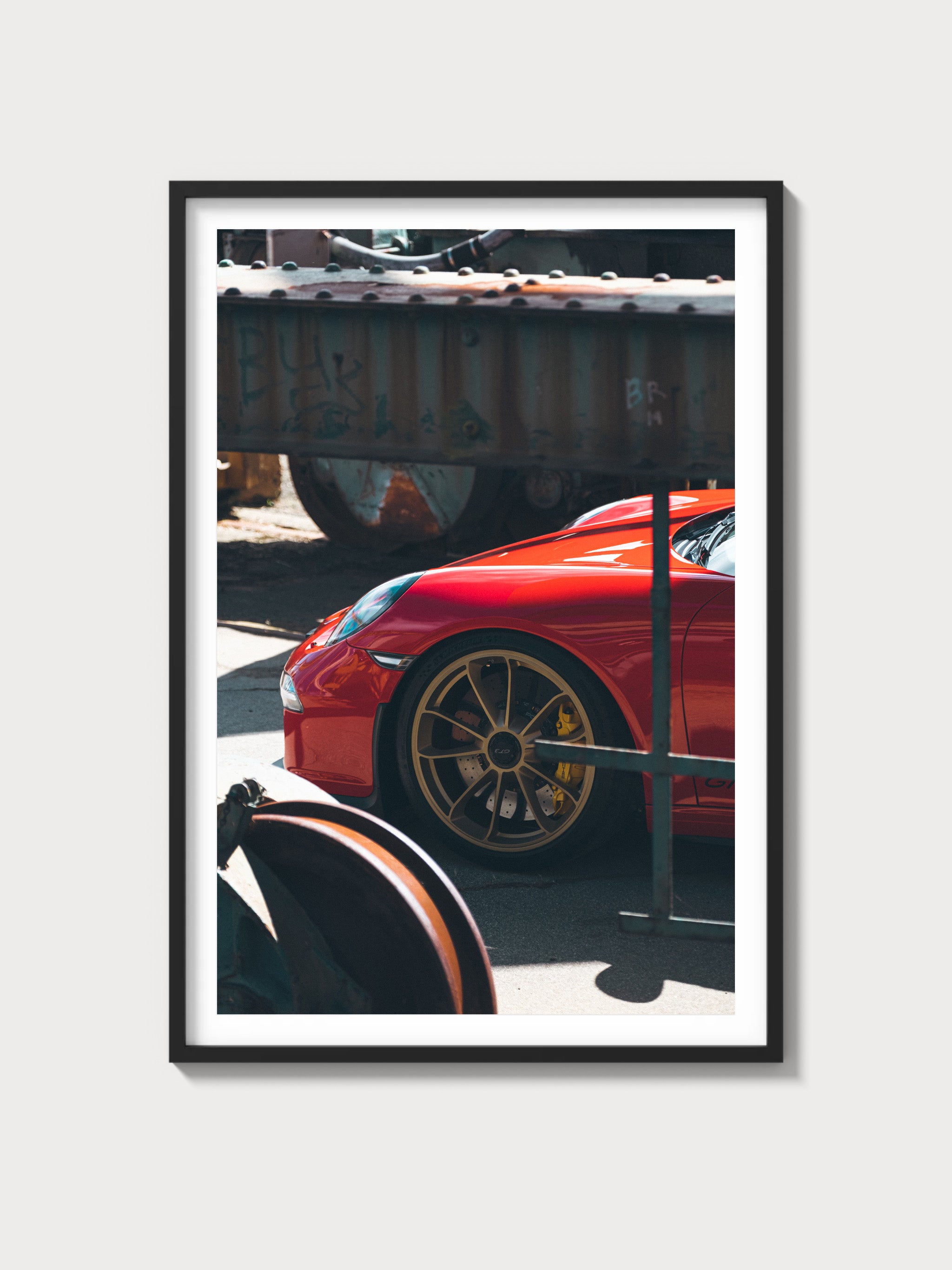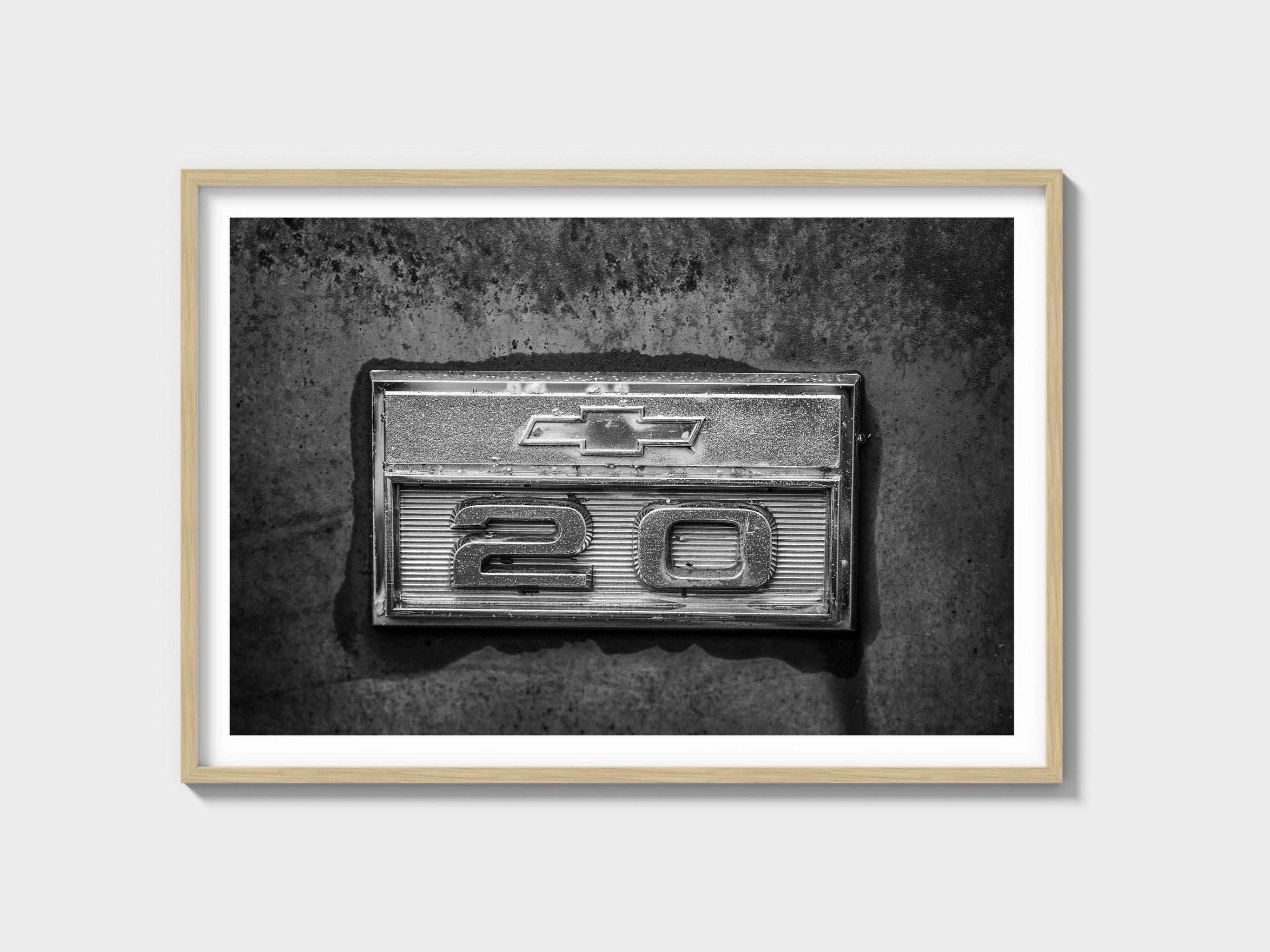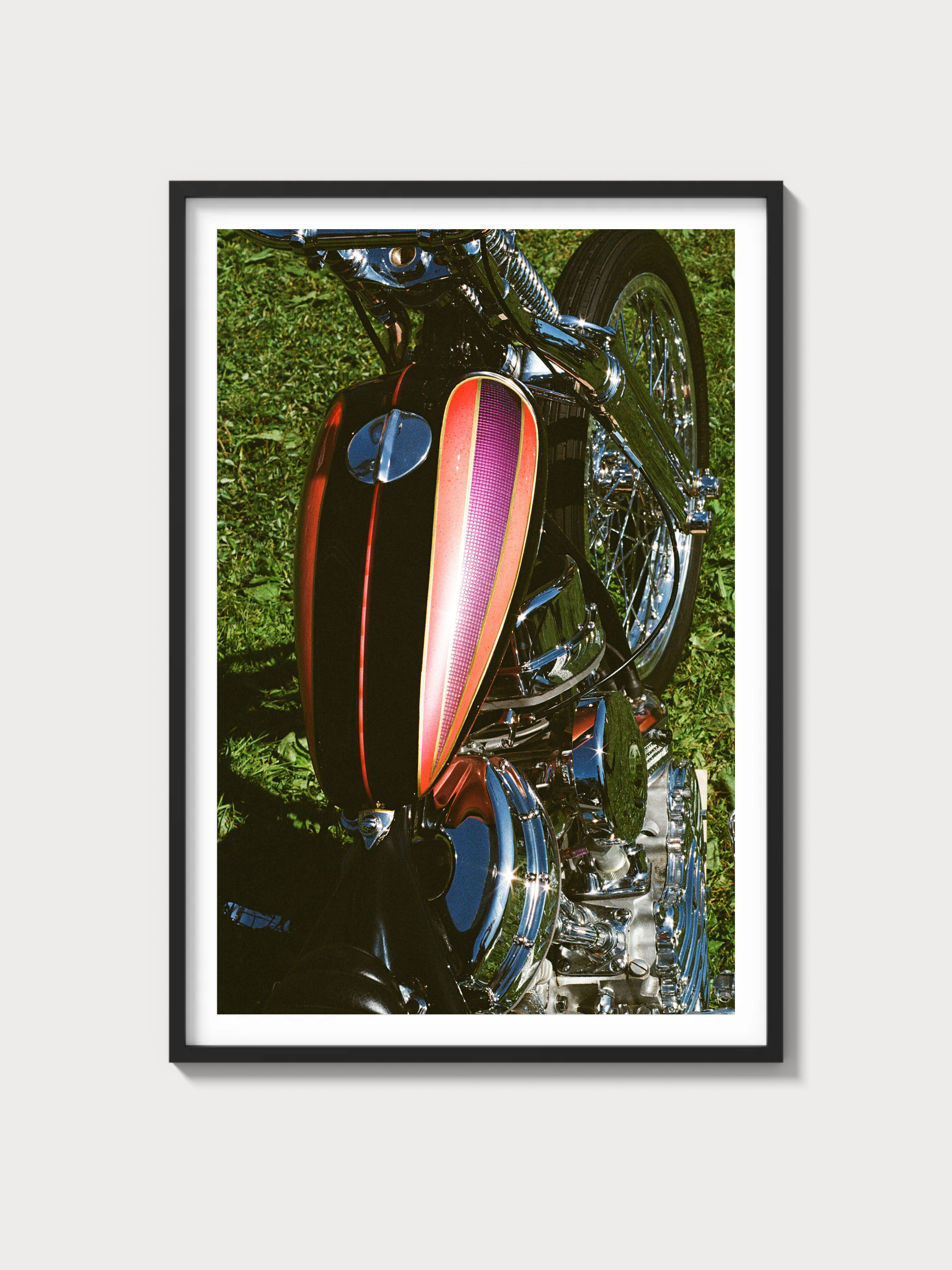2000–2006 Chevrolet Suburban Base (9th Gen GMT800) — The Pragmatic Backbone of the Full-Size SUV Era
Historical context and development background
Launched for the 2000 model year on General Motors’ GMT800 architecture, the ninth-generation Chevrolet Suburban modernized the longest-running nameplate in continuous production. Beneath its slab-sided, wind-tunnel–sharpened bodywork sat a stiffer frame, improved crash structures, and a fully independent front suspension. The Suburban Base trim served as the workhorse specification in the range—popular with fleets, municipalities, and buyers prioritizing payload, durability, and low operating costs over leather, wood trim, or theater seating.
In the corporate playbook, GMT800 unified engineering across the Silverado/Sierra pickups and the Tahoe/Yukon/Suburban/Yukon XL SUVs. Hydroformed frame sections, revised body mounts, and upgraded NVH countermeasures moved the Suburban decisively into the modern era while keeping the formula that mattered: a body-on-frame chassis, a live rear axle on leaf springs, and an iron-block small-block V8. The design team pursued a more aerodynamic silhouette compared with the previous GMT400, with tighter panel gaps and an interior with dramatically better ergonomics and packaging.
Motorsport was never the Suburban’s beat; its arena was towing, hauling, and long-distance service. In the marketplace, competitors were formidable. On the blue-oval side, Ford split the segment between the Expedition and the larger, Super Duty–based Excursion (the latter squaring up most directly to the heavy-duty Suburban 2500). On the import front, Toyota’s Sequoia arrived for 2001 with an independent rear suspension and strong NVH polish, while the Dodge Durango played a size class down. Even so, in municipalities, rural America, and large families needing nine seats plus luggage, the Suburban remained the default choice.
Engine and technical specifications
The Base trim’s mechanicals mirrored the larger Suburban family. Light-duty 1500 models centered on the 5.3-liter LM7 Vortec V8, while 2500s offered big-block torque and heavier driveline components for serious tow duty.
| Engine | Configuration | Displacement | Horsepower | Induction | Redline | Fuel system | Compression | Bore x Stroke |
|---|---|---|---|---|---|---|---|---|
| Vortec 5300 (LM7) — typical 1500 Base | 90° OHV V8, iron block/aluminum heads | 5,328 cc (5.3 L) | 285–295 hp; 325–335 lb-ft (model-year dependent) | Naturally aspirated | ~6,000 rpm (factory tach) | Sequential multi-port EFI | 9.5:1 | 96.0 mm x 92.0 mm (3.78 in x 3.62 in) |
| Vortec 6000 (LQ4) — standard on 2500 | 90° OHV V8, iron block/aluminum heads | 5,967 cc (6.0 L) | 300 hp; ~360 lb-ft (typical) | Naturally aspirated | ~5,600–6,000 rpm | Sequential multi-port EFI | 9.4:1 | 101.6 mm x 92.0 mm (4.00 in x 3.62 in) |
| Vortec 8100 (L18) — optional on 2500 | 90° OHV V8, iron block/iron heads | 8,128 cc (8.1 L) | 320 hp; 440 lb-ft (typical) | Naturally aspirated | ~5,000–5,200 rpm | Sequential multi-port EFI | ~9.1:1 | 107.95 mm x 101.6 mm (4.25 in x 4.00 in) |
Transmissions were all 4-speed automatics: the 4L60-E in 1500s and the heavier-duty 4L80-E in 2500s (particularly paired with the 8.1-liter). The widely used Autotrac transfer case (NV246) provided an automatic 4WD mode in addition to 2HI/4HI/4LO on four-wheel-drive models. A G80 locking rear differential was a common and useful option.
Driving experience and handling dynamics
Despite its size, the GMT800 Suburban is an easy truck to place on the road. 1500 models with the LM7 are smooth, tractable, and deceptively willing once rolling; torque arrives early, and the 4L60-E’s calibration keeps the engine in its comfortable midrange. The 2500’s LQ4 adds headroom with a broader shoulder of torque, while the 8.1-liter L18 turns the Suburban into a tow rig that barely notices a multi-axle trailer. Throttle feel is consistent and linear, with early trucks using a cable-operated throttle and later years adopting electronic throttle control on many configurations.
The front end rides on independent control arms. Two-wheel-drive models use coils, while four-wheel-drive versions employ torsion bars—both tuned to balance isolation with control. Out back, the Suburban retains a robust live axle on multi-leaf springs, a decision favoring payload and tow stability over ultimate ride sophistication. Steering uses a recirculating-ball gear with a light, GM-typical effort curve. Four-wheel disc brakes with ABS were standard across the run, delivering confidence and fade resistance that earlier drum-equipped trucks lacked.
Noise suppression is a strong suit of GMT800 SUVs. The cabin feels solid at interstate pace, and—especially on 1500s—Autoride-equipped trucks (where fitted) can smooth the worst expansion joints. Even in Base trim, the chassis communicates clearly without transmitting the worst road hash, and body control is sound if springs and dampers are fresh.
Full performance specifications
Factory limiters and axle ratios influence outcomes, and equipment (4x2 vs 4x4; 3.73 vs 4.10; roof racks; passengers) matters. The figures below reflect typical test results and curb specifications for stock examples within the generation.
| Specification | 1500 (5.3L LM7) | 2500 (6.0L LQ4) | 2500 (8.1L L18) |
|---|---|---|---|
| 0–60 mph | ~8.9–9.5 s (typical magazine results) | ~9.5–10.5 s | ~8.8–9.4 s |
| Quarter-mile | ~16.9–17.5 s @ ~80–83 mph | ~17.3–17.9 s @ ~78–82 mph | ~16.7–17.2 s @ ~82–84 mph |
| Top speed | ~98–104 mph (governor- and tire-limited) | ~96–100 mph (governor- and tire-limited) | ~96–100 mph (governor- and tire-limited) |
| Curb weight | ~5,300–5,800 lb | ~6,000–6,400 lb | ~6,200–6,600 lb |
| Layout | Front-engine, RWD or 4WD | Front-engine, RWD or 4WD | Front-engine, RWD or 4WD |
| Brakes | 4-wheel discs with ABS | 4-wheel discs with ABS (HD hardware) | 4-wheel discs with ABS (HD hardware) |
| Suspension | Front IFS (coils 4x2; torsion 4x4); rear live axle leaf springs | Front IFS (HD rates); rear live axle leaf springs (HD) | Front IFS (HD rates); rear live axle leaf springs (HD) |
| Gearbox | 4L60-E 4-spd automatic | 4L80-E 4-spd automatic | 4L80-E 4-spd automatic |
Variant breakdown (Base context within the 9th-gen Suburban family)
Within the GMT800 Suburban lineup, the Base trim sat beneath LS and LT. The table summarizes common trims/packages encountered, with notes specific to the Base where applicable.
| Trim/Edition | Drivetrain | Engines | Key differences | Production numbers | Market split |
|---|---|---|---|---|---|
| Base (1500) | RWD or 4WD | 5.3L LM7 | Entry upholstery, simplified audio, minimal exterior brightwork; widely used by fleets. Common options: 3.73 axle, G80 locker, Autotrac. | Not separately published by GM | Primarily North America (retail and fleet) |
| LS (1500/2500) | RWD or 4WD | 5.3L (1500), 6.0L (2500) | Upgraded cloth, more convenience features, expanded option availability. | Not separately published by GM | North America |
| LT (1500/2500) | RWD or 4WD | 5.3L, 6.0L; 8.1L optional (2500) | Leather, available Autoride/Z55, Bose audio, additional safety/comfort options. | Not separately published by GM | North America |
| Z71 (1500) | 4WD only | 5.3L LM7 | Off-road package: unique springs/dampers, skid plates, styling cues, badges. | Not separately published by GM | North America |
| 2500 Base/LS/LT | RWD or 4WD | 6.0L LQ4; 8.1L L18 optional | HD frame sections, 8-lug hubs, 4L80-E, larger brakes, higher GVWR, tow ratings. | Not separately published by GM | North America |
Notes: GM did not release official public breakouts by trim per model year. Early GMT800 Suburbans were available with two rear closure styles—liftgate or traditional cargo doors—before the range consolidated around the liftgate.
Ownership notes: maintenance, parts, and restoration
- Service intervals: GM’s Oil Life System governs oil changes; severe-use schedules traditionally point to ~3,000–5,000-mile oil changes, with extended intervals possible under light use. Transmission and axle fluids benefit from periodic changes, particularly for tow duty. Dex-Cool coolant uses long-life service intervals when maintained.
- Parts availability: Excellent. Chassis, driveline, and interior components are widely supported in OEM and aftermarket channels.
- Restoration difficulty: Straightforward mechanically; bodywork can challenge in rust-belt regions (frame sections, brake and fuel lines, rockers, rear wheel arches). Interior plastics and seat foams are readily sourced.
- Common trouble spots: Fuel pumps on higher-mileage trucks; instrument cluster stepper motors (notably mid-cycle clusters); HVAC blend-door actuators; steering intermediate-shaft clunk; transfer case “pump rub” on some Autotrac cases; brake line corrosion in salted climates; rear air-leveling components on Autoride-equipped trucks; knock-sensor well moisture on 5.3L beneath the intake manifold. The 4L60-E can suffer hard use (sun-shell failures) if neglected; the 4L80-E in 2500s is notably stout.
- Towing and cooling: Factory tow packages add transmission cooling, appropriate axle ratios, and a revised harness—valuable on any truck expected to tow regularly.
Cultural relevance and collector interest
Few vehicles symbolize American utility like a black Suburban convoy in film and television. The GMT800 generation continued that visual shorthand and remained a staple in government, emergency services, and livery fleets. Collector interest tends to follow specification: 2500s—especially those optioned with the 8.1L and low miles—draw disproportionate attention among tow-and-go enthusiasts. Auction outcomes have historically reflected this, with exceptional 2500 8.1L examples commanding low five-figure results, while high-mileage 1500 Base fleet trucks often trade in the mid four figures. Originality, rust-free underbodies, complete service records, and unmodified condition tilt the scales.
FAQs
Was the 5.3L standard on the Suburban 1500 Base?
Yes. In this generation, the Suburban 1500 centered on the 5.3L LM7 V8; the smaller 4.8L common to some GMT800 pickups was not the core Suburban 1500 engine.
What are typical tow ratings?
Equipment-dependent. Many 1500s land in the ~7,500–8,800 lb window when properly equipped (axle ratio, tow package). 2500s rise significantly, and 8.1L-equipped trucks—especially 4x2—can crest ~10,000–12,000 lb depending on configuration. Always verify with the specific truck’s RPOs and door-jamb certification label.
How reliable is the 5.3L LM7?
Well-regarded when maintained. Common items include knock-sensor well moisture, occasional intake manifold gasket attention, and typical high-mileage ancillaries (alternators, water pumps). Oil consumption is generally modest on healthy engines.
What failures should I watch for in the driveline?
4L60-E-equipped 1500s can exhibit delayed shifts or harsh engagement if fluid is neglected or heat-soaked; preventive fluid/filter service helps. Autotrac transfer cases can develop pump-rub wear; aftermarket correction plates are a known fix. 4L80-E in 2500s is robust but appreciates clean fluid and cooling if towing.
Did the GMT800 Suburban have stability control?
Stability control became available on select configurations later in the cycle. Availability varies by model year and equipment; verify on a given vehicle by option content.
Are parts and trim pieces still easy to source?
Yes. Mechanical parts are abundant; interior trim, seat heaters, switchgear, and exterior panels are widely available through OEM and aftermarket suppliers.
What’s the fuel economy like?
These are large, body-on-frame SUVs. Real-world consumption generally sits in the low-to-mid teens for 1500s under mixed use, with 2500 8.1L trucks materially thirstier. Driving style, gearing, and load dominate outcomes.
Any interior or body quirks?
Watch for headliner sag, power-seat track wear, and rear liftglass struts. Early trucks offered two rear-door configurations (liftgate or cargo doors); verify seal condition and hinge integrity accordingly.

















































